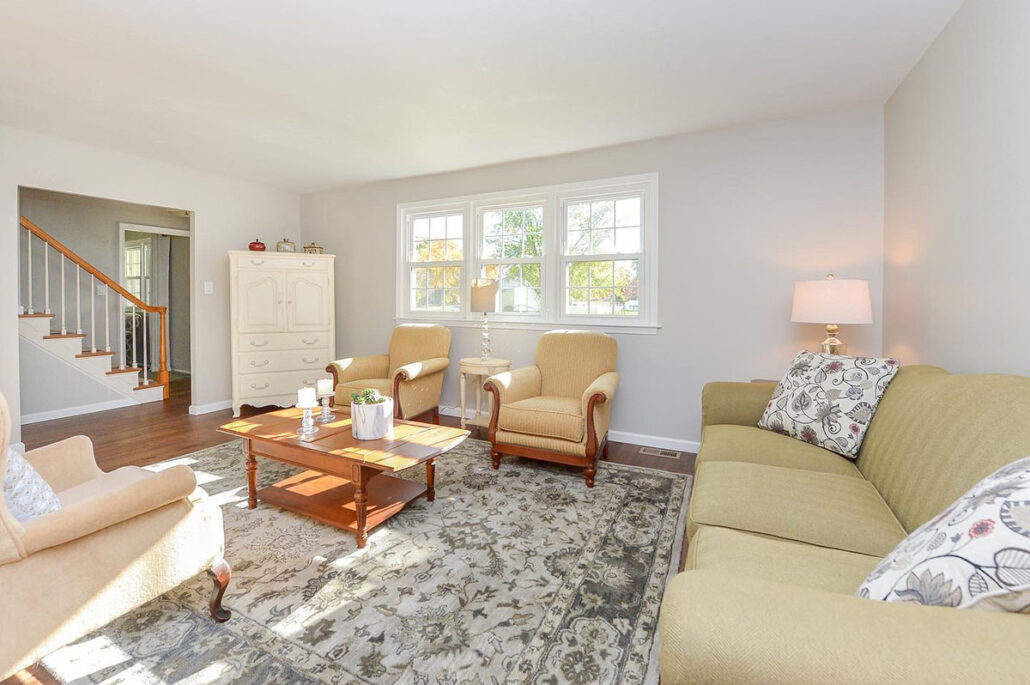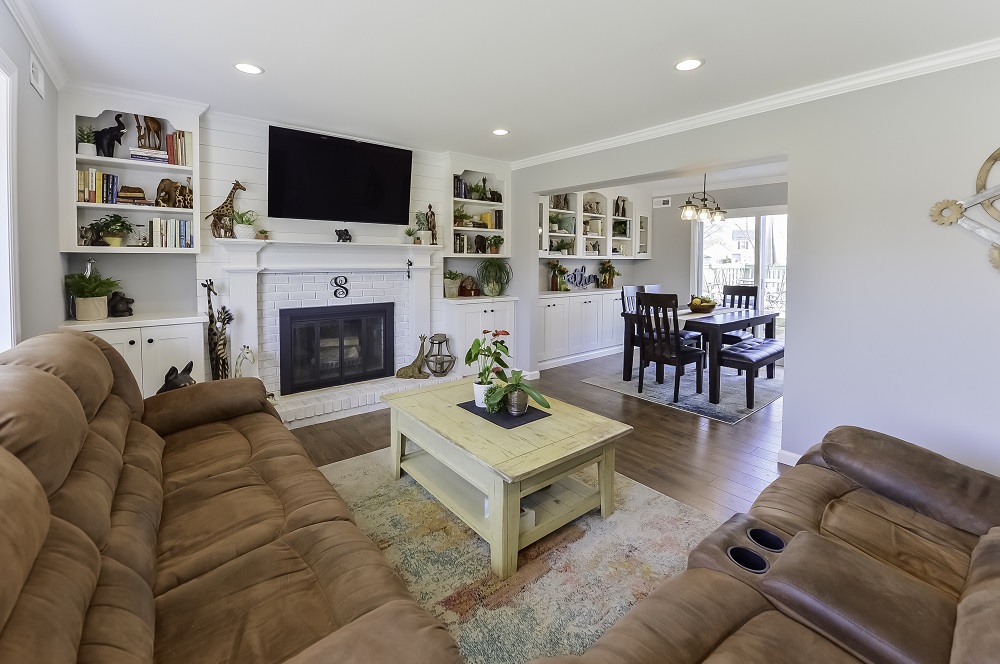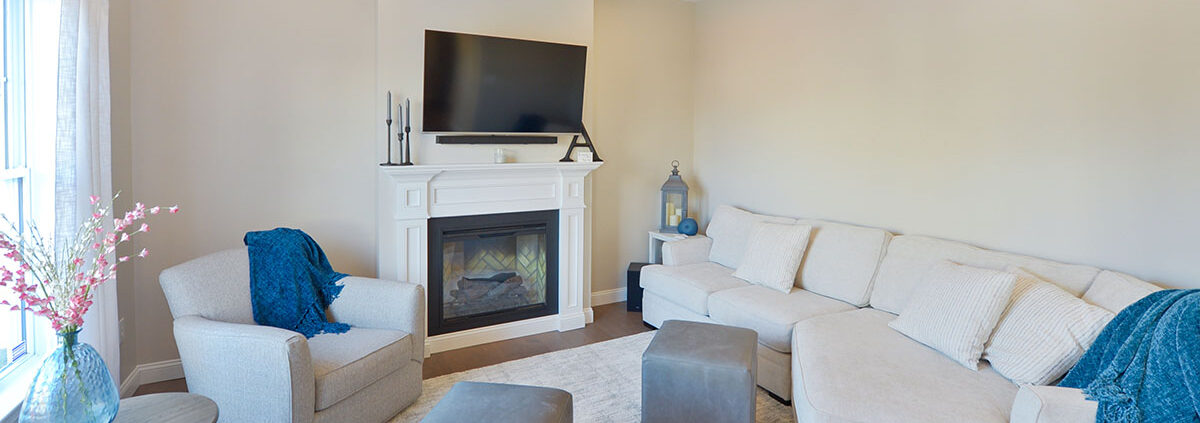Deciphering the Distinctions: Family Room vs. Living Room in Home Design
Living rooms and family rooms are often considered the very heart of a home. These seemingly simple spaces are more than just another location; they allow for social connection, relaxation, and familial bonding to take center stage in our lives. But is there a difference between them? What’s the truth behind the family room vs. living room debate?
In the world of interior remodeling, these rooms are distinct in terms of both aesthetics and functionality. To effectively shape a space into its full potential, it’s essential to understand the subtle yet impactful differences between them.
Defining Living Rooms Vs. Family Rooms
While “family room” and “living room” are often used interchangeably, each has several defining characteristics that set them apart.
Living Rooms
Historically known as the “parlor” or “drawing room,” living rooms have roots in 17th-century architecture. Initially reserved for receiving guests, these spaces reflected the social norms of the time, emphasizing a certain level of formality.
The traditional living room places a focus on sophistication and formality. It’s the designated area for hosting guests, be it social gatherings or more formal occasions. Design elements often include elegant furniture, a focal point like a fireplace, and a layout that encourages face-to-face interactions.
Traditional living rooms are often characterized by classic furniture pieces such as sofas, armchairs, and coffee tables. Decor elements may include artwork, mirrors, or intricate lighting fixtures, all contributing to an aesthetically pleasing, refined atmosphere.
Family Rooms
The concept of a family room emerged as a response to changing social dynamics. Unlike the formality of living rooms, family rooms evolved to accommodate a more relaxed, informal lifestyle. This reflected a shift towards prioritizing family activities and togetherness in the home.
Family rooms are designed with the comfort of the household in mind. They serve as versatile spaces for a host of activities – from movie nights and game sessions to casual lounging. Furniture tends to be more comfortable as well as practical, with sectional sofas, cozy chairs, and entertainment centers taking center stage.
One of the key features of family rooms is their adaptability. These spaces are often more casual and flexible by nature, allowing for a variety of layouts based on the needs or preferences of the family. This flexibility makes family rooms dynamic hubs that can easily transform to cater to different activities.
Dens and Great Rooms
The family room vs. living room discussion isn’t the only one out there! While “den” and “family room” are sometimes used to describe the same space, they can have subtle distinctions. A den often implies a smaller, more private space; it is typically used for solitary activities or as a home office. It provides a cozy retreat within the home.
Similarly, the terms “living room” and “great room” are often used synonymously. They, too, differ in terms of scale and function. Great rooms are typically larger, combining the functions of a living room with other rooms — often a dining area or even a kitchen. They are open-concept spaces that serve as the central gathering point in modern home design.
Subtleties and Nuances
As interior design trends grow and change over time, homeowners are taking advantage of subtle distinctions between family rooms and living rooms that encompass the best of both worlds.
Flexibility in Use
In contemporary home design, there’s a notable trend toward breaking free from rigid room categorizations. The traditional boundaries of family rooms vs. living rooms are increasingly blurred as homeowners seek more adaptable and multifunctional spaces. This shift is a response to evolving lifestyles that demand versatile areas — spaces that are capable of accommodating diverse routines.
As such, strategic interior design has become crucial in navigating this shift. Furniture choices that balance comfort and sophistication can transform a living room into a multifunctional hub. Incorporating elements like modular furniture, convertible seating, and smart storage solutions allows for seamless transitions between uses (i.e. formal entertaining and casual family activities). Incorporating technology also adds another layer of functionality to these hybrid spaces. For example, you may choose to include a hidden entertainment system that can cater to different guests.
Regional and Cultural Variations
It is equally important to note that the distinction between living rooms and family rooms is not always universal; in some cases, cultural influence plays a significant role in shaping these spaces. In some cultures, the living room might be the central hub for all activities (regardless of formality), while in others, the family room could take precedence as the heart of domestic life.
Here along the East Coast, for instance, interior design is increasingly focused on open-concept layouts. A sense of continuity and additional natural light characterizes this layout.
Open concept design often integrates the family room with the adjoining areas, such as the kitchen and dining space, creating a cohesive living environment. This style allows for a seamless flow between different activities while enhancing the sense of togetherness.
Practical Tips for Homeowners
When it comes to creating the ideal living environment, understanding your personal needs and lifestyle is paramount. Here are some guidance points to help you determine your home’s place in the family room vs. living room debate.
Entertainment Vs. Everyday Living
First, you’ll need to consider the primary activities you envision for the space. If you anticipate frequent entertaining, a more formal living room might be ideal. For everyday family activities, a cozy and functional family room may better align with your needs.
Formal Vs. Casual Atmosphere
Reflect on the atmosphere you want to create. Living rooms tend to lean towards formality, suitable for special occasions. Family rooms, on the other hand, offer a more casual setting for everyday relaxation. Assess which ambiance resonates more with your lifestyle.
Family Dynamics
Next, evaluate the dynamics of your household. If you have a growing family or prioritize casual family time, a family room might be essential. For singles, older couples, or those without children who frequently host guests, a living room could be a better fit.
Space Constraints
Take note of the size and layout of your home. In smaller spaces, combining the living and family functions in an open concept is a practical solution. For larger homes, having distinct living and family rooms may provide specialized areas for different activities.
Lighting Elements
Tailor lighting elements to create the desired ambiance. Living rooms easily benefit from elegant chandeliers or statement lighting fixtures, enhancing the formal atmosphere. Family rooms could embrace softer, more relaxed lighting for a comfortable feel (consider recessed lighting with a dimmer switch to adjust for the activity at hand).
Color and Design Scheme
Align the color scheme and decor with the overall mood you want to convey. In living rooms, classic and sophisticated color palettes may be suitable (i.e. beige, gray, or white shades). For family rooms, warmer tones or personalized decor better reflect the casual nature of the space (i.e. red, yellow, brown, and tan shades).
Family Room Vs. Living Room Renovation Examples

Located near the front of the home and featuring an elegant sofa and armchairs, ample natural lighting, and not a screen in sight, this renovated living room in Mickleton, New Jersey is geared toward sharing face-to-face conversation with guests.

Renovated family room in Logan Township, New Jersey, featuring a full sectional, mounted television over a semi-custom fireplace, and more whimsical decor and design elements.
Switch up Your Space with Ayars
Ready to revitalize your living space? Here at Ayars, our expert team will work with you to create living rooms and family rooms that uniquely reflect your lifestyle. Contact us to start your renovation journey today!




